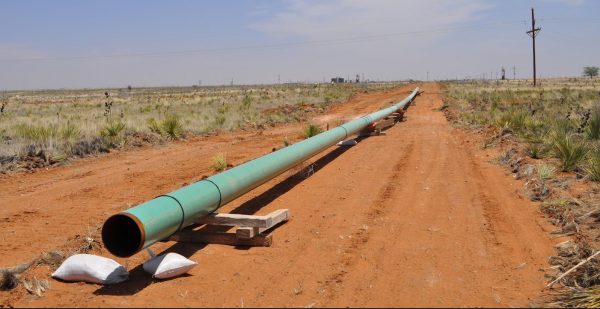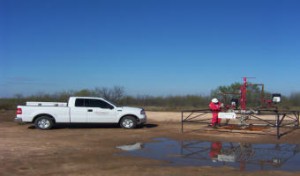 IHS Markit estimates Permian Basin will produce additional 60 billion barrels of oil
IHS Markit estimates Permian Basin will produce additional 60 billion barrels of oil
While the energy world has been pre-occupied with the global price rout over the past two years, the Permian Basin in West Texas has quietly become the hottest oil play on the planet. I interviewed senior analyst Pete Stark of IHS Markit to find out why.

How hot is the Permian?
Land prices have risen from $2,000 an acre to as high as $60,000, according to the Houston Chronicle, and landmen are scurrying everywhere in the basin trying to secure more acreage.
Adding to the land fever gripping the Permian, the US Geological Survey announced Tuesday that the Wolfcamp formation alone contained 20 billion barrels of oil, 16 Trcf of natural gas, and 1.6 billion barrels of natural gas liquids.
————————
This interview has been edited and condensed.
Markham: Why are we seeing a land – or, more accurately, an investment – rush in the Permian Basin?
PS: With the advent of horizontal drilling and multi-stage hydraulic fracturing, there’s been just a huge breakthrough in the ability to produce oil and gas from shales, source rocks, and tighter parts of reservoirs that have produced conventionally for many decades.

Over the past eighteen months there’s been almost a doubling in the improvement of capital efficiency, in the number of barrels that can be produced in the Permian from $1 million spent. Costs have gone down while performance has gone up.
Another major attraction in the Permian is the availability of multi-stacked formations. The ability for any square-mile of acreage to produce from multiple reservoirs is accentuated in many parts of the Permian Basin, and therefore you get very high valuations of the production per square-mile.
Lastly, the Permian has produced since 1921, so it has infrastructure, it has services, it has a great history of understanding the oil and gas environment, it has excellent pipeline access and deliverability to key refineries and distribution points including exports to Mexico for gas.
Those three reasons are why oil and gas companies are flocking to the Permian.
Markham: We’re seeing stories of Permian companies that bought their acreage at $2,500 or $3,500 per acre and now they’re seeing valuations as high as $60,000 an acre. What has changed?
PS: What happened was that as that performance andprofitability per well increased, more and more companies who were looking to boost their own corporate values – and also many that wanted to change from being gas dominant to being liquids dominant – looked to the Permian Basin.
It’s interesting to note that this year through September there was about $13 billion or so of investment in Permian Basin assets. Part of that was by existing strong Permian players increasing their percentage ownership in sweet spots. But, you also have new start-up companies coming into the Permian, as well as other companies that wanted to improve their stock value by having Permian acreage.

If I recall correctly, the asset deals in the Permian Basin so far this year represent 40 per cent of the total US asset deals. Compare that to 2011, when less than 10 per cent of the US asset deals were in the Permian Basin.
Markham: What role is private equity playing in this investment rush?
PS: Private equity has played a tremendous role. For instance, in 2016, we saw almost $28 billion in private equity deals. That compares to about $15 billion back in 2013, and it ran a little less than that from 2009 through 2013. So, a huge surge and a lot of that private equity money is dedicated to Permian assets.
Interestingly, a big segment is actually the larger and medium-sized independents, I would guess 80 per cent, and a much smaller part of that is going to smaller independents.
But the volume is up and the impact is significant.
Markham: What might Permian Basin operators and service companies expect in the future as prices begin to stabilize?
PS: In the Permian Basin – and both the Delaware and Midland Basins – the top three quintile wells all break even below $45 a barrel. That is very unusual.
That happens in some parts of the Eagle Ford, but much smaller areas. Even in the Bakken, in many areas you’re only at first quintile.

Because of that productivity, the Permian will show growth going forward and we really expect the Permian has the capacity to add. It’s around two million barrels a day now and we expect it to be able to grow to three million barrels a day within the next decade.
We actually believe that the Permian has the capability in the future to produce an additional 60 billion barrels of oil. Not quite two times the amount of oil that has already been produced to date. That’s phenomenal.
In 2010, everybody thought the Permian Basin was old-age, out of favour, maybe would produce another three or four billion barrels, and hallelujah for that. This phenomenon of leveraging the horizontal technologies to look at rejuvenating production from the tighter parts of conventional reservoirs, and by the way, almost a third of the future oil that we see as potential in the Permian Basin would come from rejuvenating production from tighter parts of convention.
Markham: Do you expect to see more companies developing infrastructure and developing their acreage in the Delaware over the next few years?
PS: Infrastructure will be required in the Permian Basin overall as that anticipated production growth comes to pass. There is some excess capacity now but in the next three years more infrastructure is needed.
In particular, if you look at Apache’s announcement for significant mostly liquids-rich gassy reservoirs on the Alpine on the southwestern side of the Delaware, there’s a reach there to extend pipes from existing hubs in the eastern side of the Delaware Basin to connect to that Alpine high.
As those liquids come into the production, takeaway capacity will be needed, not only from the Delaware but also the system out of the Permian Basin as a whole.



1 Trackback / Pingback